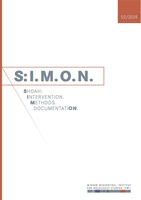“Genetically Criminally Inclined” and Worse than the Gestapo? Decoding the Holocaust-Distorting Narrative on the (Jewish) Informer Stella Goldschlag
“Genetically Criminally Inclined” and Worse than the Gestapo? Decoding the Holocaust-Distorting Narrative on the (Jewish) Informer Stella Goldschlag
Author(s): Philipp DinkelakerSubject(s): History of Law, Criminal Law, Political history, Social history, WW II and following years (1940 - 1949), Fascism, Nazism and WW II, History of the Holocaust, History of Antisemitism, Court case
Published by: Wiener Wiesenthal Institut für Holocaust-Studien
Keywords: Holocaust; Aftermath of the Holocaust; Shoah; Post-Holocaust; Holocaust trials; postwar trials; war crime trials; Nachkriegsdeutschland; antisemitism; Antisemitismus; Kollaboration; collaboration;
Summary/Abstract: This article addresses the teenage years spent in Nazi-era Berlin of the infamous Gestapo informer Stella Goldschlag (also named in some sources as Kübler, Isaaksohn, Kübler-Isaaksohn or Goldschlag-Isaaksohn). Previous research and recent commercial adaptions of her case have focused on her actions between 1943 and 1945. Caught in hiding as an “illegal” Jew, tortured, and blackmailed with the lives of her parents in July 1943, Goldschlag “agreed” to help the Gestapo to hunt escapees to the Berlin underground as a so-called Jewish Greifer (snatcher). The article complements the state of research on the case by focusing on her life before 1933 and her family background, her connection to swing culture, and the question of her religion. Confronting the little we know about her early life with some of the far-reaching assumptions that make the recent commercial adaptations of Goldschlag’s story so problematic, the article sheds light on how Nazi persecution impacted Goldschlag before 1943. Punishing her more severely than the Gestapo officers who had enforced her betrayal (if they were indicted at all), Soviet and West German authorities consecutively sentenced Goldschlag as a Nazi perpetrator in 1946 and 1957, explaining her actions by her pathological evilness. The article demonstrates how the Berlin police shaped the image of Goldschlag as a “Jewish perpetrator” immediately after the Shoah, using established antisemitic imagery. Placing the case in the context of how dealing with alleged Jewish collaboration led to a reversal of victim and perpetrator as a denial of guilt antisemitism in post-war Germany, the paper offers a starting point to decode core aspects of what could be regarded as the “Goldschlag narrative”.
Journal: S:I.M.O.N. Shoah: Intervention. Methods. Documentation.
- Issue Year: 11/2024
- Issue No: 2
- Page Range: 57-78
- Page Count: 22
- Language: English

